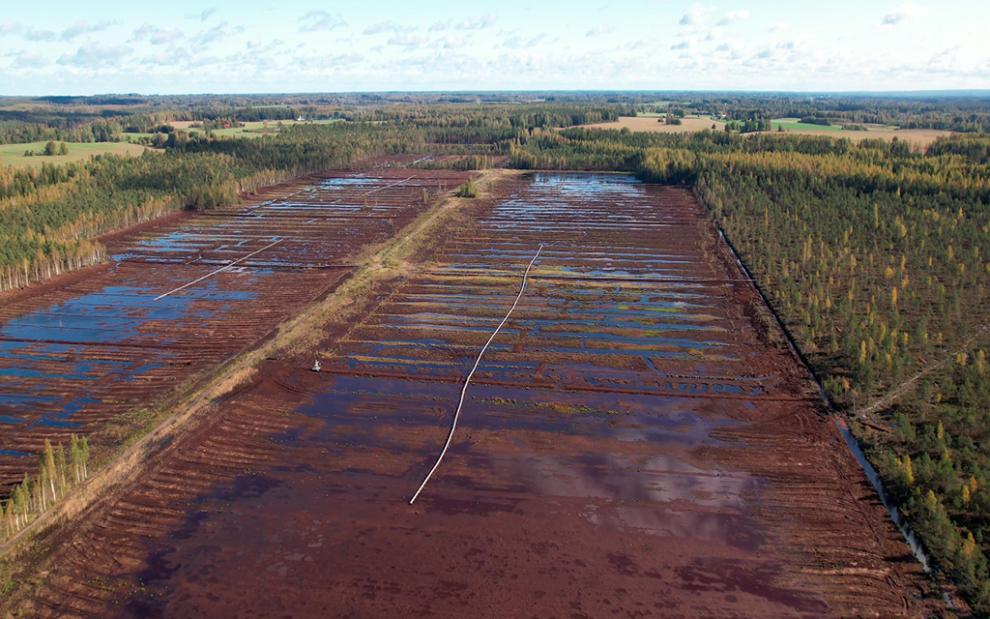A new study led by University of Tartu has been published, offering valuable insights into the carbon budget and greenhouse gas (GHG) fluxes of an abandoned peat extraction area in Lavassaare, Estonia. Read more.

A new study led by the University of Tartu has been published, offering valuable insights into the carbon budget and greenhouse gas (GHG) fluxesof an abandoned peat extraction area in Lavassaare, Estonia. The research forms part of the REWET project’s ongoing efforts to better understand and restore Europe’s degraded wetland ecosystems.
Understanding the Carbon Balance of Abandoned Peatlands
The study monitored CO₂, CH₄, and N₂O fluxes over two consecutive years (2023–2024) using both eddy covariance and closed chamber techniques. The results show that the site currently acts as a carbon source, but also indicate encouraging signs of recovery that could shift the balance toward a net carbon sink as vegetation and water levels continue to recover.
Researchers observed that:
- Annual CO₂ emissions reached 84 ± 129 g CO₂–C m⁻² y⁻¹ in 2023 and 19 ± 53 g CO₂–C m⁻² y⁻¹ in 2024.
- CH₄ emissions were 1.28 ± 0.64 g CH₄–C m⁻² y⁻¹ in 2023 and 1.94 ± 0.69 g CH₄–C m⁻² y⁻¹ in 2024.
- N₂O fluxes varied spatially, with slightly higher emissions in areas dominated by Betula pendula and lower values under Pinus sylvestris.
These measurements highlight the spatial heterogeneity of GHG emissions within the site. In particular, vegetation type was shown to influence methane fluxes, with the highest CH₄ emissions occurring in Phragmites australis stands due to plant-facilitated transport.
Combining Methods for Deeper Insights
By integrating eddy covariance and chamber measurements, the study demonstrated how combining multiple monitoring techniques can better capture the complex variability of GHG fluxes across heterogeneous landscapes. This combined approach improves the accuracy of long-term carbon budget assessments for degraded peatlands — a crucial step for guiding rewetting and restoration strategies.
Towards Climate-Positive Peatlands
The findings suggest that with continued vegetation recovery and a higher water table, the Lavassaare site could gradually transition into a net carbon sink, contributing to Estonia’s and Europe’s broader climate-mitigation goals.
This research provides an important contribution to REWET’s mission of restoring wetland ecosystems and improving our understanding of GHG dynamics.
Read the full paper here.